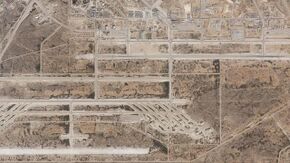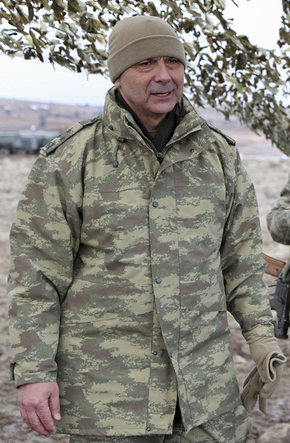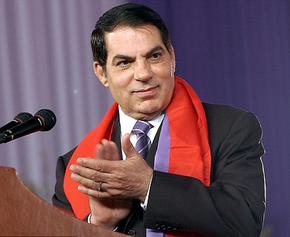Sangar Incident: Difference between revisions
(→Plot) |
|||
| Line 55: | Line 55: | ||
Lastly, the report cited the significantly limited manpower the plotters call upon for their operation. At most, the report estimated the plotters held command over a maximum of 2,800 men, enough perhaps to execute the plan if there was little to no immediate resistance by law enforcement, specifically the Zahedan Capital Police. The report stated that the Central Command Council denouncing and defeating the coup would have been inevitable owing to their small numbers, it also concluded saying, "Zahedan is an urban area home to 18 million people, to successfully control such a large politically engaged populace, as well as its 43,000 police officers and gendarmes would have been impossible with such numbers at their disposal." | Lastly, the report cited the significantly limited manpower the plotters call upon for their operation. At most, the report estimated the plotters held command over a maximum of 2,800 men, enough perhaps to execute the plan if there was little to no immediate resistance by law enforcement, specifically the Zahedan Capital Police. The report stated that the Central Command Council denouncing and defeating the coup would have been inevitable owing to their small numbers, it also concluded saying, "Zahedan is an urban area home to 18 million people, to successfully control such a large politically engaged populace, as well as its 43,000 police officers and gendarmes would have been impossible with such numbers at their disposal." | ||
== Plot foiled == | == Plot foiled == | ||
Revision as of 09:14, 20 October 2020
The Sangar Incident (Pasdani: واقعه سنگر; Vagheah-yi Sangar; Rahelian: حادثة سانغار; Ḥādiṯa al-Sangah) was a foiled plot to overthrow the Zorasani government under State President Ekrem Dalan and First Minister Izzat al-Din Kahala in mid-2004. The conspiracy involved a group of junior officers housed at the Sangar Army and Air Force Base and was stopped pre-emptively by the Central Command Council.
The plot came at a time of growing social and economic upheaval as a result of the neo-liberal and secular reforms of the XX-XX government. The success of the previous XX-XX reformist government in pushing the military out of politics had fostered tensions, which were deepened by the military’s sense that the successive liberal governments were violating the foundational principles and values of the Union of Zorasani Irfanic Republics. In late 2003, the plotters led by Major Sadiollah Khodapavar began planning for the overthrow of the government and the instituting of a military dictatorship. They progressed as far as securing forged documents authorising the deployment of military forces in and around the capital, Zahedan. The plot was foiled by the successful surveilling of the plotters by the Inter-Services Discipline Office, who were arrested on 24 May 2004, all were subsequently sentenced to death for sedition by a Special Military Tribunal.
The foiled plot marked a short-lived improvement in civil-military relations. However, the plot stands as a precursor to the Turfan, a period of violent civil and social unrest that resulted in the electoral defeat of the XX-XX government and the liberal-reformist movement in Zorasani politics. The Tufan ultimately resulted in the restoration of entrenched military domination over politics and a return to radical ideological governance by civilian hardliners in alliance with the military.
Origins
Liberal governments and reforms
In 1990, the liberal-centre left Society for National Transformation political bloc secured a majority in that year’s general election, marking the first time a non-military backed and Renovationist political group had won an election. The reformist government under State President Abdelraouf Wazzan and First Minister Faris-Ali Erekat launched a major plan for constitutional, economic and social reform. Their economic reforms resulted in securing Zorasan as one of the fastest growing economies in the world for over a decade and elevated an estimated 56 million people out of poverty. Their social reforms introduced a vast majority of women into the work force and they succeeded in opening the nation’s media, while reducing censorship.

The Wazzan-Erekat government however, ensured that it maintained a cordial relationship with the military, even as it won key votes in pushing the military out of politics. In 1994, the government adopted the State Defence Agreement, in which the military would acquiesce to the government’s reforms in exchange for a series of promises, such as relinquishing civil control over the defence budget, permitting the continue presence of military-run printed and broadcast media outlets and the abolition of the State Defence Council and its powers being transferred to the Central Command Council. This agreement consolidated the Wazzan-Erekat government’s ability to liberalise and open both the economy and Zorasani democracy.
Despite a family scandal forcing the resignation of First Minister Erekat, his successor, Zakaria Moradi and State President Wazzan would see the SNT government re-elected in 1995 with an increased majority. The expectation of many that further reforms would established a civil-military relationship operated by the advanced nations, with complete civilian oversight never came to fruition and was regularly rejected by the government. The failure also to pursue the removal of Irfanic clerical influence from government, particularly the public morality campaigns would result in the SNT selecting the more radical Ekrem Dalan and Izzat Din-Kahala as the candidates for State President and First Minister respectively for the 2000 general election. Their selection resulted in a shift of the SNT toward the left and its renaming to the National Reform Front.
The Dalan-Kahala ticket sparked concern both among the military and clerical establishments and both would actively support the Renovationist parties during the election, though the NRF would be re-elected for a third five-year term with a reduced majority.
Dalan-Kahala Government and tensions
The Dalan-Kahala government’s top priority was further reform of the economy, which also included the complete privatisation or shuttering of military owned companies. Ekrem Dalan, who had previously served as a chief economic adviser under the Wazzan-Moradi government was a staunch supporter of neo-liberalism and believed the semi-statist nature of Zorasan’s economy would eventually hinder its development. In a speech in 2000, Dalan said, “there can be no state in the economy and that means no state whatsoever, need it be said that the military is the state.”
Tensions began to emerge between the military and the government, not only over its plans to remove the military from key sectors of the economy, but also its plans to restore the State Defence Council and government control over the defence budget. These tensions though rarely entering public view on occasion between 2000 and 2005 did so. The most controversial incident prior to the coup plot was the use of the General Intelligence Directorate by the military to leak details of corruption among the NRF’s state-level elected officials. In turn, the Union Office for Auditing in 2003, revealed the embezzlement of funds from military-owned companies by leading officers.
It was not until the neo-liberal economic reforms that opposition to the government expanded beyond the top ranks of the armed forces to the wider officer corps. The near shock therapy like reforms not only resulted in mass lay-offs numbering into the low millions by 2004 but caused severe declines in real wages for non-professional workers, exacerbating the income disparity that emerged during the 1990s. Coupled with the oft unsubtle message by the Dalan-Kahala government of instituting outright secularism nationally, many junior officers saw the government as actively destroying the values and principles of the Union. The agitation of junior officers coincided with growing popular resentment toward the reforms, which would ultimately boil over during the Turfan.
It is widely believed that the senior leadership of the armed forces were aware of the radicalisation of junior officers, and either ignored it through shared concerns and opposition to the government, or opted to allow it to spread to secure a tool to which it could pressure the civilian government into halting its economic and social reforms.
Khodapavar Club
In early 2002, Major Sadiollah Khodapavar, who commanded the 113th Infantry Battalion of the 15th Motorised Brigade based at the Sangar Army and Air Force Base, 45km west of Zahedan, established an on-base political debating society, reserved for other low-ranking commissioned officers, but also non-commissioned officers. The Zorasani military officially adopted the NCO system in 1990 as a means of modernising its capabilities, where initiative was considered a serious weakness.
The society drew over 30 members from across the base, including members from the Irfanic Revolutionary Air Force. Between 2002 and 2003, the society was mostly confined to basic social events, debating modernisation of the military, its political traditions and according to eyewitness testimonies, the “rage against the government usually took place on the side-lines, rather than in the actual conversations.”
In January 2003, the commanding officer of the 15th Motorised Brigade was arrested for embezzling funds from the Ministry of National Defence, supposedly earmarked for renovations to the Sangar Base. The arrest was viewed by many across the military as a “politically motivated attack”, as it fell within the period of the civil government and military attacking the other for corrupt practices. Testimonies on the Khodapavar Club revealed the move “radicalised the group, who saw the arrest and the wider tit-for-tat actions as a violation of the military’s sacred status.” Between January and October, the club became ever more vitriolic in its meetings, where conversations and debates became “highly ideological”, the meetings were reportedly drawing on topics raised by similar social groups at other bases and facilities across Zorasan. The same period saw an increase in cases across multiple facilities of personnel displaying Arduous Revolution era paraphernalia, artifacts and using the images of government officials as dart boards.
It was not until late 2003, that the club had “reached critical-mass in its own self-radicalisation that the plotting to overthrow the government began.” While Khodapavar was the central figure in the plot, according to testimonies, the first push for a coup came from Captain Hassan Al-Badawi, an officer in the Air Force and a close personal friend of Khodapavar.
In the official Special Tribunal report released in 2006, the Club had potential to succeed in its aims owing to the “high degree of loyalty by subordinate troops to the NCOs present at the meetings, it should also be noted that the feeling of agitation toward the government was shared by all ranks that provided fertile ground for such radicalisation.”
Plot
According to the 2006 Report, the plot was relatively simple in nature. The various junior officers of the Khodapavar Club would secure written authorisation from their commanding officers through forged papers, to deploy their respective units in and around Zahedan in the late hours. The necessity for a forged written deployment authorisation was a last minute addition, owing to the belated appointment of a new commanding officer to both the Sangar base and the 15th Motorised Brigade on December 29 2003. With this written authorisation, they would have a cover in the event of confrontation with law enforcement.

Select units would shut off the main entry points to the capital, primarily the key junctions of J2, J5 and J7 motorways and the O44 and O77 provincial roads. 102 soldiers under Captain Al-Badawi’s Air Force unit would seize control of Mahrdad Ali Sattari International Airport. A larger force, of roughly 2,300 men under the command of Khodapavar, Major Qassem Shirazi and Captain Abdullah Saad, would enter the city centre, seize control over key ministries, the federal parliament building and storm the Nazarat Palace, home to the State President and First Minister. A smaller force would capture the UCTV studios and once confirmed that the heads of state and government were detained, announce a military take over. In the announcement, the speaker would openly invite the Central Command Council of the armed forces to assume power for the “sacred Union’s security and prosperity and to defend the holy faith from the threat of secularist terrorism.” The plot assuming the CCC acquiesced, would return to base following the expected declaration of martial law by the CCC.
The plot also assumed armed resistance from the security details provided to ministries and the heads of state and government, but ignored the Zahedan Metropolitan Police.
Plot's weaknesses
The plot, if prosecuted would have faced serious structural weaknesses. The 2006 Report's analysis of the plot revealed a series of significant weaknesses in the viability or possibility of success.
The first structural weakness was the deployment of forces with weapons and supplies not alerting the higher echelons of the military. Whilst they had secured to obtaining a forged document authorising the deployment of units to Zahedan, the visual of columns of troops and vehicles leaving Sangar would have alarmed higher ranking officers of the 15th Motorised Brigade. Should this have occurred, and base commandant and brigade commander were informed, their ignorance of the deployment would have aroused sufficient suspicion.
Secondary to this weakness was the failure of the plotters to guarantee absolute loyalty and security of the soldiers involved with the selected units. Following the ISDO raid which revealed the plot, several soldiers under the command of the plotters remarked to state media that they would have enquired about their deployment. It is well known within the Zorasani military that the deployment of military units to the federal capital is highly regulated and for the most part, prohibited. Documents seized in wake of the raid revealed the plotters had planned to tell their soldiers that they were being deployed due to a “serious terrorist threat against the capital.”
Further weaknesses was the reliance on seizing UCTV’s studios in the capital. The report cited the numerous outlets and broadcasters that had emergence since 1990, which undermined the monopoly UCTV held over both television and radio, enabling other government figures to take to the airwaves to denounce the seizure of power. The report claimed that the plot's greatest weakness was the complete absence of relationships with any senior figures on the Central Command Council, denying them any inkling as to whether the armed forces' commanding figures would support the coup or accept the invitation to form a military government. The report said, "the plotters not only lacked a direct line of communication to the Central Command Council, they lacked any certifiable relationship with the members of the Council. Not only did this deny them a source for much needed support at the supreme command level, it denied them the ability to determine the viability of their call for a military government being answered positively. To further degrade the plot was the absence of ties to any commanding officer above the brigade level." This was compounded by the apparent lack of planning for the possibility of a CCC refusal or rejection, as the report stated, "at no point did the plotters seek to produce a back-up plan in the event of opposition from the Central Command Council, thus it would be assumed in hindsight that the plotters if executed their plan successfully, yet facing a CCC rejection and condemnation would either have installed one of their own as head of a provisional government or gone home."
Lastly, the report cited the significantly limited manpower the plotters call upon for their operation. At most, the report estimated the plotters held command over a maximum of 2,800 men, enough perhaps to execute the plan if there was little to no immediate resistance by law enforcement, specifically the Zahedan Capital Police. The report stated that the Central Command Council denouncing and defeating the coup would have been inevitable owing to their small numbers, it also concluded saying, "Zahedan is an urban area home to 18 million people, to successfully control such a large politically engaged populace, as well as its 43,000 police officers and gendarmes would have been impossible with such numbers at their disposal."


